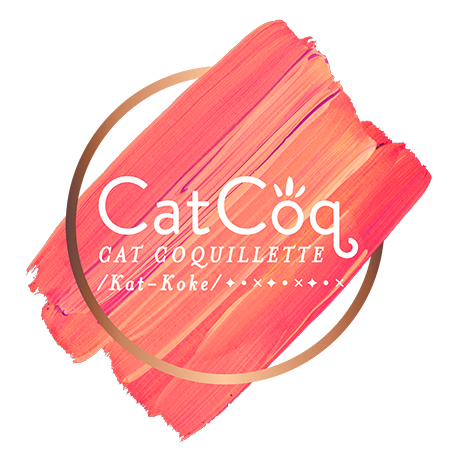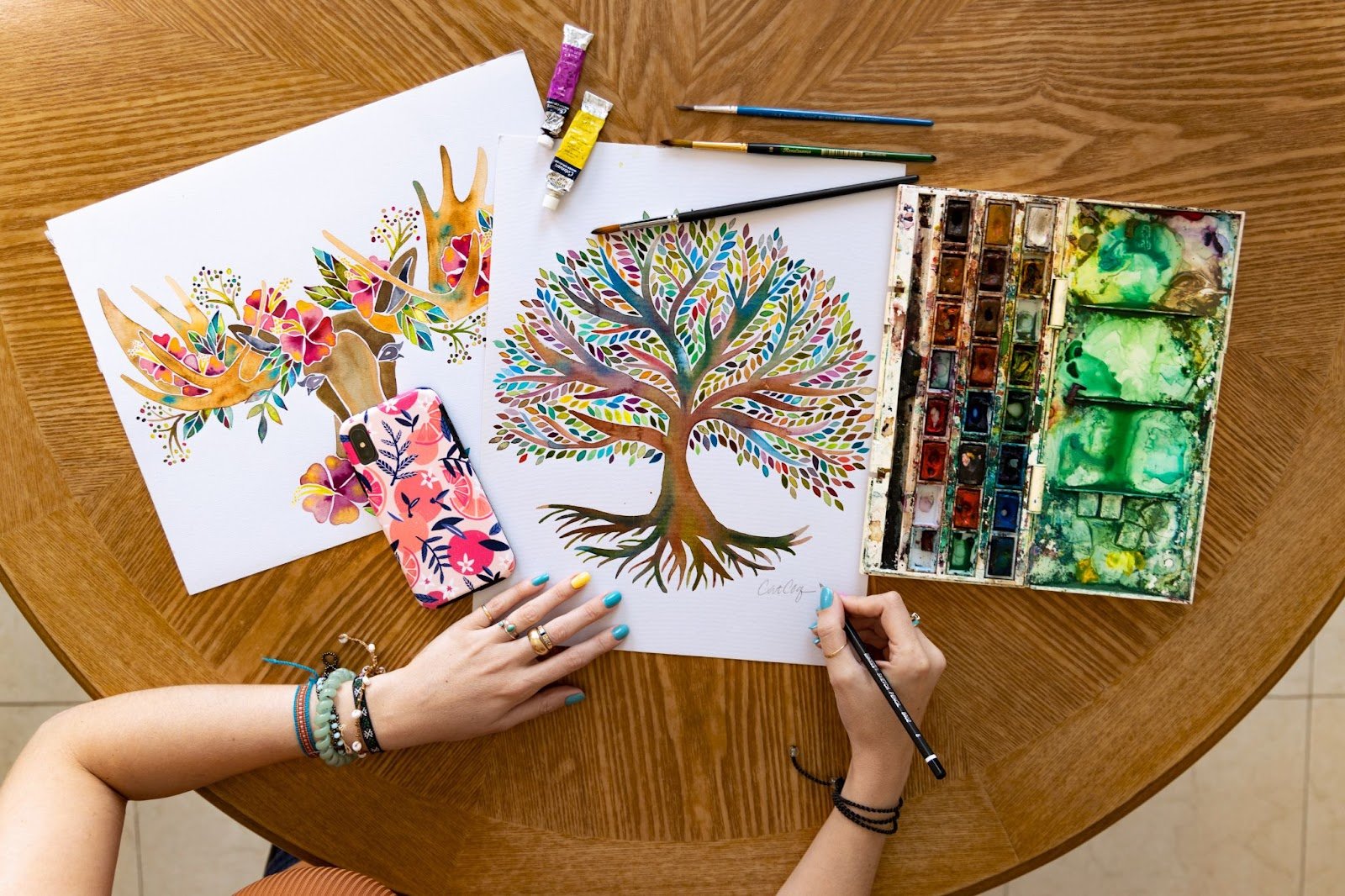How to Find Your Art Style
One of the things that can be a challenge as an artist is learning how to find your artistic style. Finding your style or voice as an artist is key if you plan to sell your artwork online or turn your art into your full-time job. It’s also your way of sharing what resonates with you as an artist and gives you the opportunity to stand out from the crowd. The world needs your unique voice, so in this blog post, we’ll explore ways to find your artistic style.
Finding my artistic voice
To start off, I wanted to share a bit about how I found (and continue to find) my own artistic voice! My artistic voice is constantly evolving. When I was first getting started with watercolors, I enjoyed painting food & florals.
When the calligraphy and floral wreath fad was in full swing around 2014, I dove into that and filled my portfolio with phrases and florals.
Now, I'm doing more patterns than ever before. When I paint a new motif, I ask myself, "How can I turn this into a seamless pattern?"
Though the motifs that I’ve painted have changed over the years, my art is still recognizable as “mine” because of how I paint. Bright colors, charming imperfections, and whitespace are all part of my personal style. Though your style will evolve as you grow as an artist, it’s always nice to have some core elements that make your art uniquely yours!
How to find your artistic style
Now let’s dive into the actionable steps you can take to find your artistic style. Finding your style boils down to two main steps:
Ask Questions
Explore!
Let’s dive into each of these and how you can use them to find your voice.
Ask Questions
The journey to finding your artistic voice is ever-evolving, but to start I’d encourage you to do a little reflection to see what resonates with you as an artist. Here are some questions you can ask to start getting an idea of what elements of your style are already present and what you gravitate towards the most.
Are your motifs realistic or more characterized and illustrative?
What color palettes do you frequently infuse into your artwork?
How detailed vs. how simplified do you make your paintings?
What's the complexity level of your composition? Do you create a full scene, or leave your main motif floating on the page?
Do you set your main motif against a blended wash or go for a more minimal approach and leave the background paperwhite and unpainted?
Do you add similar icons or elements to many of your paintings? (Repeat shapes like stars or squiggles?)
How do you infuse texture into your paintings? (Blooms, drips, dots, salts, dry brushstrokes, or something else?)
As you look at your existing artwork you should start to see patterns emerge. If you don’t have a large body of work yet, you can ask yourself these questions as they relate to what you enjoy in other artists’ work.
Exploration
Once you’ve had some time to reflect, it’s time for the fun part - exploration! Finding your artistic style is an active pursuit. It’s not an idea that will just pop into your head. Rather, it will evolve and change as you keep creating art and making things that feel true and authentic to you!
I would encourage you to experiment and explore with a wide range of techniques that interest you as you’re figuring out your style. With practice, you’ll find what medium, motifs, and elements speak to you and you can carry these into all of your work to create your own unique style.
Something I get asked a lot from my students is how to create your own style when you’re starting out and still learning. I totally understand this concern! When I was first starting out, I was worried that if I practiced a technique that looked similar to another artist I admired, it would mean I was copying their work. You never want to copy what others are doing verbatim, but you can learn and explore techniques from those artists as you’re figuring out your style.
For example, one element of my personal style is whitespace in my watercolors. However, I don’t have a monopoly on using whitespace - it’s just one of the many elements that make up my style. As you’re learning, you might want to try out painting with whitespace to see if it feels authentic to you and what you want to create. When I was first exploring my style with watercolor I discovered that it was my favorite way to paint. It has become integral to my personal style, but I welcome others to explore it as well!
I know that it can feel a little overwhelming to try and find your style as an artist, but always come back to the reason why you fell in love with art in the first place. If you connect to your love of creativity as you’re pursuing finding your style, you’ll have more fun exploring and will create a more authentic and unique style as a result!
If you want to dive deeper into exploring your artistic voice, Check out Lisa Congdon's book, Find Your Artistic Voice. It helped me identify what drives me creatively and how to nurture that part of my artistic brain.
Want to take the next step in your creative journey?
If you want to dive deeper into learning new creative skills, check out my classes that will walk you through the process step-by-step.
Digitize Your Art to Sell Online
In this class, you’re going to learn the step-by-step process of digitizing and enhancing your analogue artwork specifically for print-on-demand sales. Think of this as the advanced version of this blog post!
Step-by-Step Guide to Art Licensing
This class is filled with actionable steps that help you make your first sale with artwork online, as well as boosting your sales if you’re already selling.
Hand-painted Seamless Patterns in Photoshop
In this class, you’ll learn the full process for creating seamless patterns with hand-painted designs, from watercolor painting to arranging your pattern on your computer, so you can sell your designs online through print-on-demand.
















